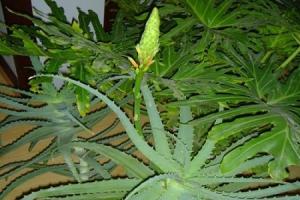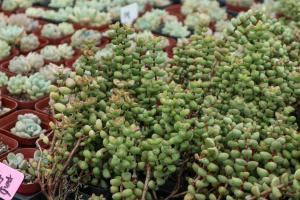How to Trim Lavender Plants in Pots
Lavender is a beautiful and versatile plant that can thrive in a variety of settings, including pots. However, in order to keep your lavender plants healthy and looking their best, it's important to know how to trim them properly. In this guide, we'll cover everything you need to know about trimming lavender plants in pots.
When to Trim
The best time to trim your lavender plants is in the spring or early summer, just after the first flush of flowers has finished blooming. This will encourage the plant to produce more blooms and help it maintain its shape throughout the growing season.
Tools You'll Need
In order to trim your lavender plants in pots, you'll need a few basic tools. These include:
Pruning shears
Gloves
A small saw
Having these tools on hand will make the process much easier and ensure that you're able to make clean, precise cuts.
Trimming Techniques
When trimming your lavender plants in pots, there are a few key techniques to keep in mind:
Remove dead wood: Start by removing any dead wood from the plant. This will help stimulate new growth and prevent disease.
Shape the plant: Use your pruning shears to shape the plant into a neat, compact mound. Lavender plants should be trimmed to a height of 6-8 inches, and should have a circular shape.
Prune back one-third: Trim back one-third of the plant's overall size. This will promote bushy growth and encourage the plant to produce more flowers.
Cut at an angle: When making cuts, be sure to cut at a 45-degree angle. This will help prevent water from pooling on the cut surface, which can lead to disease.
Avoid cutting into old wood: Try to avoid cutting into the old, woody stems of the plant. This can damage the plant and make it more susceptible to disease.
Aftercare
After trimming your lavender plants in pots, it's important to give them a little extra care to help them recover. Water the plants well, and be sure to remove any dead foliage or blooms that may have fallen onto the soil. This will prevent disease and promote healthy growth.
It's also a good idea to fertilize your lavender plants after trimming them. Use a balanced, slow-release fertilizer and apply it according to the manufacturer's instructions. This will help provide your plants with the nutrients they need to grow strong and healthy.
Conclusion
Trimming lavender plants in pots is an important part of maintaining their health and beauty. By following these tips and techniques, you can keep your plants looking their best and enjoy their lovely scent all season long.

 how many times do yo...
how many times do yo... how many planted tre...
how many planted tre... how many pine trees ...
how many pine trees ... how many pecan trees...
how many pecan trees... how many plants comp...
how many plants comp... how many plants can ...
how many plants can ... how many plants and ...
how many plants and ... how many pepper plan...
how many pepper plan...































